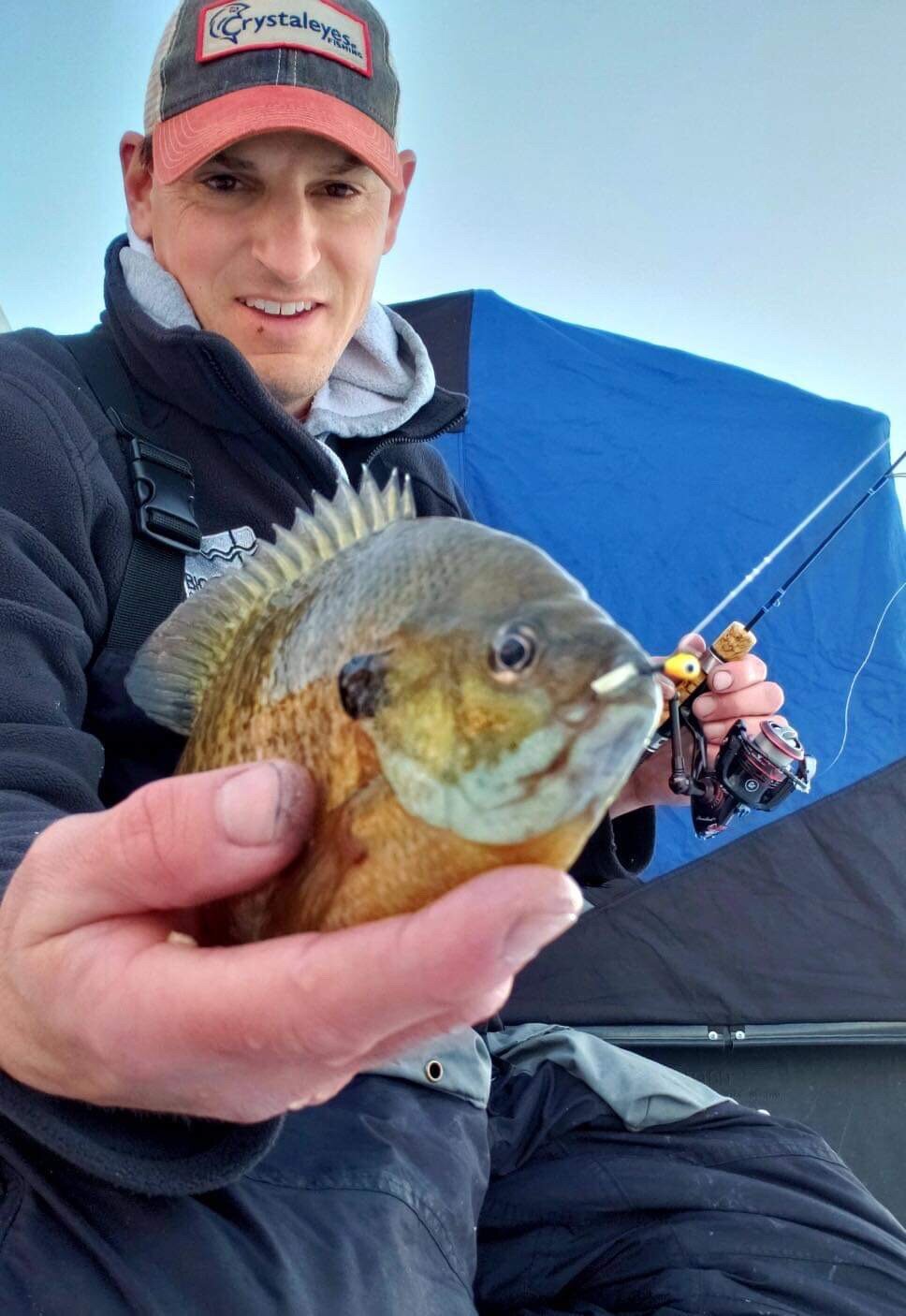My first experience with ice-bait of any kind wasn’t a wax-worm, euro-larvae, or or silver wiggler, it was with a humble goldenrod grub. Each fall we’d collect goldenrod bulbs in a cardboard box from around the farm, then sit in the basement and pry them apart. Holes in the bulb would indicate the grub had left, but an intact pod would be split just up until the center. After which, you’d extract the tiny white grub from the center and put it in small jars with corn meal. It was free and plentiful, but took some time to pull those little buggers out. It also led to a few scars and plenty of frustration, though the panfish certainly appreciated them.
Fast forward a decade or more, and I began to fall in love with plastics for ice. Anything with a flicker tail could be threaded on your favorite jig with the greatest amount of customization. I had color, shape, length, and rigging choices galore to fully experiment with, day-in and day-out. Ice plastics made me a better angler then, as I was able to spend more time fishing, less time re-baiting, and ultimately learn to fine-tune a presentation with utmost detail. You could adjust the angle of the plastic, rigging backwards, curling it up to cover the hookpoint; whatever the situation needed, you had a way to mimic or stand-out.
Now, as plastics designs have moved forward, we’ve gone much further than adjusting shapes, colors, and sizes. Attractants “baked-in” to the design of these plastics are all the rage, though simple scents have been a part of the plastics routine from day-one. Anise scent is commonly used in a variety of soft plastics, but the new breed is going as far as making them out of actual organic materials. You guessed it, fish food for lack of a better term. That said, you may see them expressed as “fish proteins,” “amino acids,” and even “donkey-sauce.” All of which would seem like a good thing to both entice fish into biting, but also keeping them on the tasting menu.
While you’ll see plenty of plastics labeled as “infused” or otherwise coated with scent, here’s a few of the more interesting varieties with actual fish-food as part of the bait’s construction:
Northland Impulse – I’ll start with the plastic most similar to, well, plastic. Northland’s Impulse formula has some organic materials and natural products as part of its makeup, and though the proprietary formula is a secret, they’ve certainly done their due diligence. Major university research showed in repeated experiments that fish retain the bait in their mouths 143% longer than the leading competitor soft plastics. Moreover, it won’t firm up or be rendered un-usable after some time out of the water. Softness in the plastic/organic blend allows for more undulation in a variety of popular shapes and sizes, making it a go-to for those looking at the benefits of a hybrid. I’ve used these for years and have always been successful with this bait.
Eurotackle Mummy Worms – Next, we’ll cover the real thing, literally. Euro’s mummy worms are real wax-worms, but mummified. While the process is closely guarded, the key is that these things are well-preserved and ready to go in a variety of colors. What’s dead already can’t stink up your ice-bibs, and it’s obvious that fish can prefer live-bait only at times, making this a great option on the go.
Beavertail Baits – Perhaps the most interesting item in the category is a series of completely organic ice baits from Beavertail. Based on the name, you might be able to guess the actual makeup of these ice baits, which begs the question, why beaver-tail? Andrew Gullickson, owner/operator has a few reasons. “First off, it has the traditional appeal, taste, and feel of live bait,” says Gullickson, adding “natural oils in this product last all day compared to lures that are dipped in scent and can get diluted.” He also mentions the durability of the product, which is always an issue with live bait. “This stuff is ultra-tough compared to bait and even your average plastic, making it a great for fishing gills and perch that are notoriously rough on bait,” says Gullickson. It also comes in various color options, allowing for different looks in different water clarity and color. Similar to the mummy-worms, Beavertail baits are preserved through a special process that allows shelf life and no stink.
The beaver-tail product shares another unique quality in that it is neutrally buoyant. Iowa guide Darrin Jones of Big Fin Guide Service uses these baits to fool the famously finicky gills of the gin clear Okoboji system. “I can fish these baits with extremely light jigs and get better kick out of them than traditional plastic,” mentions Jones. He also echoes Gullickson in describing how long they last on a hook. “I can catch 25 plus gills on a single bait, which is important for these clear lake gills in a shrinking bite window,” says Jones. More time in the water than out of it is important, but to Jones, so are the adjustments he can make to these baits. “I like taking the scissors to these and modifying them, with my favorite shape being a simple split tail created by cutting one lengthwise from one end nearly to the other,” says Jones. “They’re infinitely adjustable, giving me more options when fish are in a funk.”
I think we all could agree that more options out there is a good thing, especially when they are getting closer and closer to live bait. That said, these options with all of their other favorable qualities are giving the real thing a run for its money.

